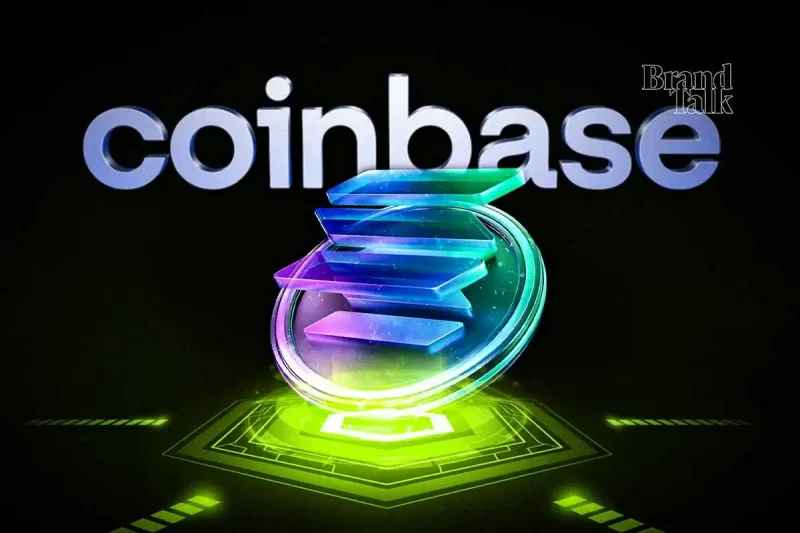

Coinbase SOL Updates:- In a good news for the crypto users and investors, Coinbase has announced the much anticipated upgrade in its Solana infrastructure.
These updates are particularly soothing to the users who had faced significant struggles on Coinbase exchange and its wallet during January.
While announcing the upgrades, the exchange said that it has been working very hard to scale its Solana infrastructure since then.
Notably, Solana’s memecoin trading-driven surge has pushed the exchange’s Solana stack to ten times higher than its actual throughout.
What are the new Upgrades in Coinbase Solana Infra?
In early 2025, Coinbase users took to social media to vent our their frustration in the exchange’s long transactions time for Solana.
A user had reportedly said that two transactions from a Solana wallet to coinbase took him more 10 hrs – to get completed.
Now in order to solve this, Coinbase as part of its new updates has shifted to asynchronous transaction handling.
This means that its systems can now process transactions blocks in parallel. Previously, transaction blocks were processed sequentially, which created bottlenecks under heavy load.
According to the largest US exchange’s X post, this will improve its block processing throughput by 5 times.
This change alone is expected to slash wait times for transaction confirmations. This means that high‑volume periods will no longer compromise user experience or liquidity flows.
Hey @coinbase and @CoinbaseSupport
34 hours this is the most ridiculous thing I’ve ever seen by you guys, I’m starting to get pretty mad .
Release the money by the morning or next I’ll be contacting a lawyer
pic.twitter.com/4S7beJ6cow
— Shiba King
(@Shiba_King1991) January 21, 2025
Coinbase Shifts to Bare‑Metal Machines and Enhance liquidity
In addition to software tweaks, Coinbase has migrated critical components of its Solana stack onto dedicated bare‑metal servers rather than virtualized cloud instances.
Virtual machines (VMs) run on top of something called a hypervisor, which is like a middleman between the software and the actual computer. This middleman uses up some of the computer’s power (CPU and memory), which can slow things down.
But the newly adopted bare-metal servers skip that middleman. According to IBM, they let the software run directly on the hardware, so Coinbase’s systems can use 100% of the server’s power.
In simple terms, this means faster processing, quicker responses from the system, and smoother handling of Solana transactions.
According to the exchange, this shift can deliver roughly a four‑fold improvement in remote procedure call (RPC) speed – allowing faster queries and state reads on the Solana ledger.
Further, Coinbase has also deployed back‑end optimizations to ensure better distribution of SOL liquidity across its order books and custody wallets. Its enhanced monitoring tools would now track on‑chain and off‑chain liquidity metrics.
These “operational changes” would give Coinbase’s operations team finer‑grained oversight to prevent order execution delays and maintain deep, frictionless liquidity for Solana assets.
Further, these updates to the exchange’s Solana ecosystem come as Canada approves and launches first Spot Solana ETFs this week.
Upgrade for Transaction Failures
To bolster resilience, the exchange has also introduced advanced failover augmentations. This will automatically reroute traffic in the event of node failures or network congestion.
The upgrade implements multi‑region redundancy and health‑check protocols that detect performance degradation in real time.
If a node underperforms or becomes unresponsive, traffic would immediately shifts to healthy nodes without manual intervention. This will help in guarding users against partial outages or cascading failures that have previously led to stalled transactions.
Bullish Market Reaction
News of the Coinbase Solana infrastructure improvements has already created ripple effects across the Solana markets.
As of writing, SOL’s price has climbed by 6% to its highest level in April – trading around $136 – today. This has ended up outperforming many top cryptocurrencies – XRP, BTC, ETH – as investors viewed the upgrades as a bullish signal for on‑chain activity and exchange confidence.
Notably, SOL Price is also driven by the Solana ETF approval in Canada.

The upgrades become all the more important as Solana’s on‑chain trading continues to grow.
Particularly driven by the memecoin trading volume, its current state stands at over $15 billion in DEX transactions during the past seven days alone. Surprisingly, this has surpassed every other chain in this time frame.
The post Coinbase Updates Solana Infrastructure – What the Key Changes Mean appeared first on CoinGape.

